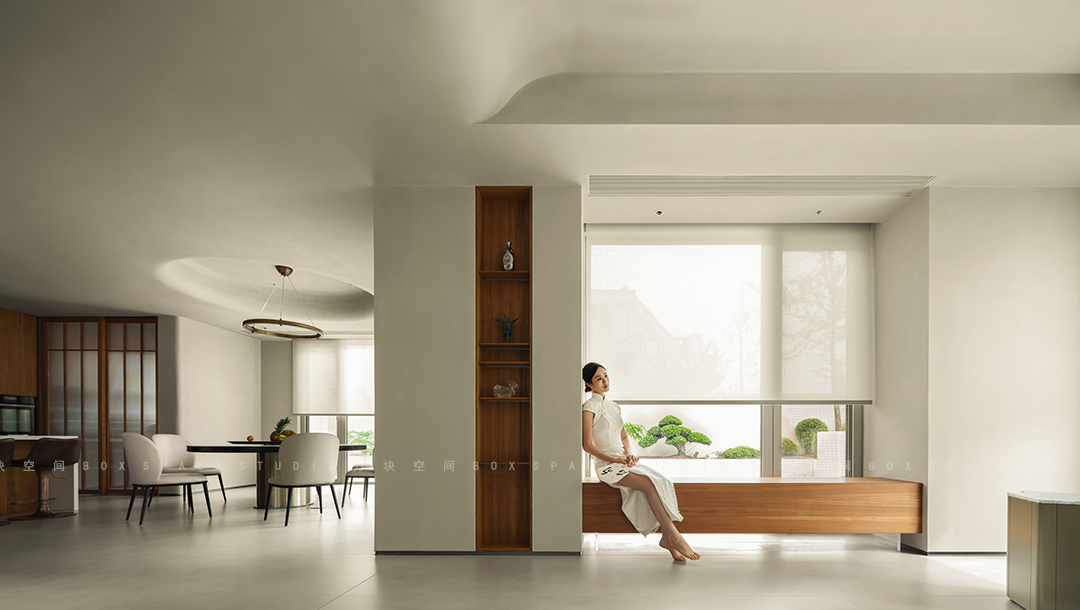Residential Bridge Competition Entry Rasha Kiani + Mahdi Kamboozia
2013-05-01 01:00
Courtesy of Rasha Kiani + Mahdi Kamboozia
Rasha Kiani Mahdi Kambozia提供
为人和人与人之间的互动做好准备,从小规模和个人活动到大范围的社会活动,这些活动都会给邻里带来潜在的生活潜力,并使人们能够获得各种各样的经验,从有形的体验到对周围环境的无形和非凡的参与,从而提高邻里社区的生活质量。
Preparing the context for the people and interactions to take place, from small scales and personal activities to large scales and social events that bring neighborhood potentials to life and enabling wide ranges of experiences from tangible ones to some intangible and extraordinary involvement in the surroundings and consequently enhances the quality of life in the neighborhood community.
Courtesy of Rasha Kiani + Mahdi Kamboozia
Rasha Kiani Mahdi Kambozia提供
重新思考住宅正式类型学作为分隔单元和城市空间是如何融合的,以一种代表人们生活和社会事件序列的方式将桥梁路径和居住空间结合起来,这种空间组织以灵活的方式将河岸连接起来,通过在布拉格的环境中不断出现的互动和日常生活的可能性,最大限度地提高空间的质量。探讨居住体验如何从城市事件和社会活动中受益,通过各种途径、景观走廊和城市空间扩展,导致了不同程度的隐私和公众之间的动态变化。
Rethinking on how residential formal typology as separated units and urban spaces can merge, cause to a combination of bridge pathways and residential spaces in a way that represents sequences of people life and social events, this organization of spaces links the river banks in a flexible way that maximize the quality of space by emerging interactions and possibilities of everyday life in the context of Prague. Searching on the way that residence experience can benefit from urban events and social activities led to a dynamic morph between different levels of privacy and public by the mean of access alternatives, view corridors and urban space extensions.
Courtesy of Rasha Kiani + Mahdi Kamboozia
Rasha Kiani Mahdi Kambozia提供
在设计的形式方面,这座桥被重新定义为城市表面的延伸,将城市从伏尔塔瓦河两岸合并而来,而不是两点之间的线性连接,并创造了一座在城市/公共和家庭/私人之间的空间扭曲和变形的双圆形环形桥梁。
In the formal aspect of design, the bridge, redefined as an extension of urban surface that merges the city from both sides of the Vltava river, instead of linear connection between two point, and created a double circular loop bridge that spatially twists and morphs between city/public and home/private.
考虑到遗址的历史背景和高度限制,它不像塔楼一般以垂直的高层建筑形式布置住宅单元,而是以面向中心城市广场的低层水平组织形式向河流和单元倾斜。
By concerning historical context and height limitation of the site, instead of typically arrange residential units in vertical high-rise typology like a tower, it is bent over the river and units oriented in low-rise horizontal organization that facing to the central urban plaza
 举报
举报
别默默的看了,快登录帮我评论一下吧!:)
注册
登录
更多评论
相关文章
-

描边风设计中,最容易犯的8种问题分析
2018年走过了四分之一,LOGO设计趋势也清晰了LOGO设计
-

描边风设计中,最容易犯的8种问题分析
2018年走过了四分之一,LOGO设计趋势也清晰了LOGO设计
-

描边风设计中,最容易犯的8种问题分析
2018年走过了四分之一,LOGO设计趋势也清晰了LOGO设计




























































